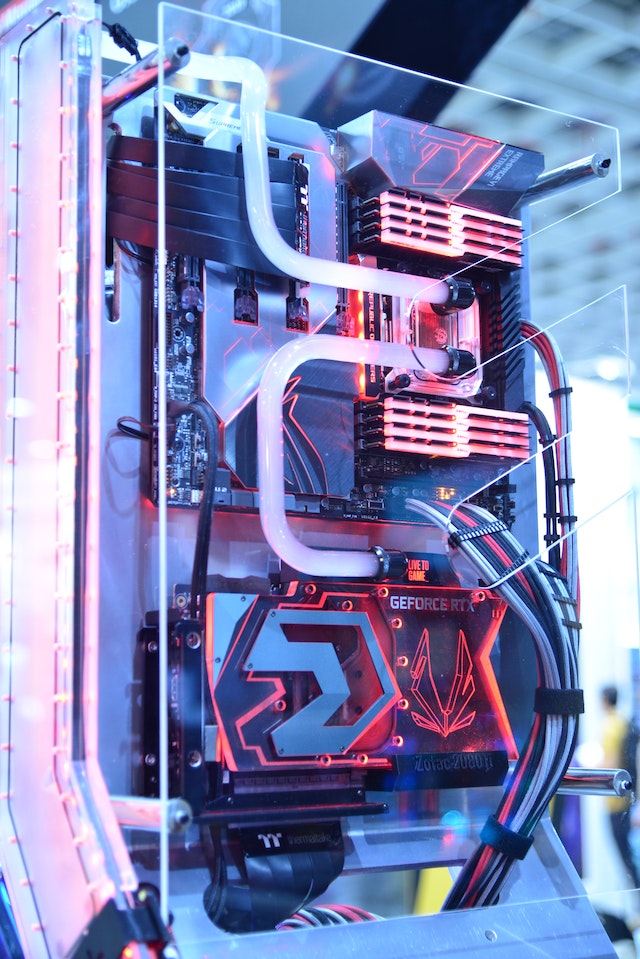RecyclerView: Displaying Lists in Android is a powerful and versatile component. In the Android framework that revolutionized the way lists are displayed and managed in mobile applications. Unlike its predecessor, ListView, RecyclerView offers better performance. Flexibility, and extensibility, make it an essential tool for developers to create efficient and visually appealing list-based interfaces.
In this article, we will delve into the world of RecyclerView. Exploring its features, benefits, and usage to help you master the art of displaying lists in Android.
The Evolution of List Views: In the early days of Android development, developers relied on ListView to showcase lists of data. While functional, ListView had its limitations in terms of performance and customization. The RecyclerView emerged as a solution to address this. These issues provide a more efficient alternative.
Understanding RecyclerView: The RecyclerView serves as a container for displaying large sets of data efficiently. By recycling and reusing views as users scroll through a list. It consists of three main components: the RecyclerView itself, the LayoutManager, and the Adapter. The RecyclerView manages the overall layout. While the Layout Manager arranges individual items. The Adapter binds data to the views.
Benefits of RecyclerView:
Improved Performance: RecyclerView’s recycling mechanism minimizes the creation and destruction of views. They lead to smoother scrolling and reduced memory consumption.
Flexibility: Developers have more control over the layout and animation of items. They enable creative and engaging user interfaces.
Separation of Concerns: The separation between the Adapter, and LayoutManager. RecyclerView itself allows for better code organization and maintainability.
Anatomy of RecyclerView: To utilize RecyclerView effectively. It’s essential to understand its key components:
Layout Manager: Determines how items are positioned and laid out on the screen. Android provides built-in LayoutManagers like LinearLayoutManager. GridLayoutManager, and StaggeredGridLayoutManager.
Adapter: Binds data to people’s views and manages the creation. Binding, and recycling of view holders.
ViewHolder: Represents an item’s view and holds references to its UI elements. To optimize performance by reducing calls to findViewById().
ItemAnimator: Adds animations to item changes. Such as insertions, deletions, and moves.
Implementing RecyclerView:
A step-by-step guide to implementing a RecyclerView in your Android application:
Add RecyclerView to Layout: Include the RecyclerView widget in your XML layout file.
Create Layout for Items: Design the layout for individual list items.
Create Adapter: Extend RecyclerView.Adapter and implement necessary methods. Like onCreateViewHolder() and onBindViewHolder().
Configure LayoutManager: Choose an appropriate LayoutManager based on your list’s requirements.
Set Adapter and Data: Instantiate the Adapter, set it to the RecyclerView, and provide data.
Enhance with Animations: Implement ItemAnimator to add visual appeal to item changes.
Optimizing RecyclerView Performance:
To ensure optimal performance when using RecyclerView:
Implement DiffUtil: Use DiffUtil to calculate and apply only the necessary updates to the RecyclerView. They reduce unnecessary UI updates.
Lazy Loading: Load data in chunks or pages as the user scrolls. Rather than loading the entire dataset at once.
View Recycling: Properly implement the ViewHolder pattern to efficiently reuse views.
Image Loading: Utilize image loading libraries to handle image loading and caching efficiently.
Handling User Interaction: RecyclerView supports various types of user interactions:
Click Handling: Implement item click listeners to respond to user clicks on list items.
Long Press: Handle long press events to provide contextual actions.
Read more: Reasons to Hire a Managed Service Provider for Your IT
Drag and Drop: Enable drag-and-drop functionality for reordering items.
Swipe to Dismiss: Implement swipe gestures for deleting items from the list.
Extending RecyclerView Functionality: Recyclerview’s extensibility allows for innovative features:
Multiple View Types: Use different view types within the same RecyclerView to display diverse content.
Headers and Footers: Add static or dynamic headers and footers to the list.
Endless Scrolling: Implement infinite scrolling to load more data as the user reaches the end of the list.
Best Practices and Tips:
Use RecyclerView for Complex Lists: Opt for RecyclerView when dealing with larger and more complex lists. While considering ListView for simpler cases.
Optimize Layout Hierarchies: Design efficient item layouts to avoid unnecessary nesting of views.
Test on Real Devices: Test RecyclerView behavior on real devices to ensure smooth performance and responsiveness.
Conclusion:
RecyclerView has transformed the way lists are displayed in Android applications. They offer enhanced performance, flexibility, and customization. By understanding its components, implementing best practices, and leveraging.
Its features, developers can create engaging and efficient list-based interfaces. That enhances the user experience. Embrace the power of RecyclerView to unlock new possibilities in your Android app development journey.
Faqs:(Frequently Asked Questions)
Q1.What are the three main components that make up a RecyclerView?
A. The three main components of a RecyclerView are the RecyclerView itself, the LayoutManager, and the Adapter.
Q2.Why do we use a list view?
A. ListView is used to display and manage lists of data in Android apps. It provides a scrollable and efficient way to present large datasets. They enhance the user experience by organizing information in a structured manner.
Q3.How can you tell the difference between GridView and list view?
A. GridView displays items in a grid layout, often with multiple columns. They are suitable for structured content like images. ListView arranges items vertically or horizontally in a linear list.
Q4.What is the @+ ID list in Android?
A. In Android, @+id is used to declare a new resource ID for a UI element. They allow it to be uniquely referenced and manipulated within the layout XML and code.
Q5.What are the features of a list view in Android?
A. ListView in Android offers a scrollable list to display data. They support adapters for dynamic content and handle item click events. It can be customized for layout and appearance.



